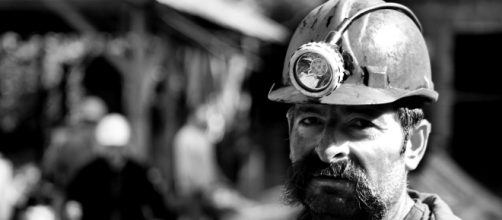Coal mining is a dirty, dangerous business as your reporter well knows having grown up in coal country as well as working as a mechanic at a gigantic open pit strip mine. Nevertheless, candidate Donald Trump pandered to the 70,000 or so existing coal miners during his campaign, promising to bring back coal but it seems as if even coal miners don’t believe in coal power today. There are between 60,000 and 80,000 US coal miners counting those working, those laid off, and those in retirement who say they want to go back to work. That’s approximately the same number of people who work for just one of the smallest fast food chains.
Coal mine museum goes solar!
There is a museum of mining in Harlan County, Kentucky which mainly serves to show just how terrible a job being a coal miner really is. The Kentucky Coal Mining Museum is on Main street in a town of 500 people which only sports one real street. The museum houses all the modern 1940’s deep mine equipment you would have used to mine in the mountains of Kentucky from hand tools to the electric carts used to transport workers and pull trains of coal carriers in and out of mines.
Most of the coal mined today in the United States comes from strip or surface mines but there are still some deep or hard rock mines.
But the most interesting thing about this museum which seems stuck in the 1990’s as far as its Web presence goes, is how it is catching up with the modern world by changing how it powers its exhibits and lights.
Earlier this month the museum, citing cost savings, began installing a large solar panel array on the museum’s roof. Not only will this switch to solar save upwards of $10,000 per year over electricity purchased from the grid, a percentage of which comes from coal-fired power plants, they expect to be able to sell extra power back to the grid, further undermining (so to speak) the need for coal even further.
Why switch to solar?
President Trump promised to remove the regulations which he said were what killed the coal mining industry and apparently some or most of the miners believed him. A medical worker in Punxsutawney, Pennsylvania (an area with many older closed mines and many new gas wells) whose father is a coal miner and whose husband wants to be a coal miner, told Blasting that the only reason coal mines were closing was due to environmental and other regulations forced on the industry.
The regulations she was referring to all had to do either with the safety of the miners themselves or the health and safety of those who lived in the area near a mine. The first step President Trump took to reduce regulations was to reverse an Obama regulation which blocked coal mines from dumping toxic waste into streams, streams which lead to rivers which, in turn, are used as a source of drinking water by some cities as well as by farmers for crop irrigation.
Fortunately for those who breathe the air and drink the water, it is estimated that only one single coal mine might reopen when the regulation is removed and even that is unlikely unless natural gas becomes much more expensive.
The same medical worker, when your Blasting reporter suggested that the fact that coal cost nearly one-third more than natural gas was a major reason for so many mines being close, just looked confused and had no real reply. That is typical of the coal mining families in this region of central Pennsylvania.

